#fin de siècle Paris
Text

Paul Berthon (Franch, 1872-1909) • Poster for the revue L'ermitage • 1897 • Color lithograph • Los Angeles County Museum of Art
#illustration#art#illustrator#artwork#paul berthon#french artist#art nouveau#paris#color lithograph#poster illustration#historical poster#event poster#sassafras and moonshine#art blogs on tumblr#illustration blog#fin de siècle paris
19 notes
·
View notes
Photo

Interior del Moulin de la Galette = Inside the Moulin de la Galette
Ramón Casas (Spanish; 1866–1932)
ca. 1890–91
Oil on canvas
Museu Nacional d’Art de Catalunya, Barcelona, Spain
#Catalan painters#Catalan artists#Catalan art#Spanish painters#Spanish artists#Spanish art#1890s#Ramón Casas#Casas#Moulin de la Galette#Montmartre#Belle Epoque#Belle Époque#1890s Paris#fin de siècle Paris#fin de siècle#Spanish paintings#bohemians#dance halls#Parisians#Paris nightlife#women#wine#wine bottles#café tables#musicians#interiors#Museu Nacional d’Art de Catalunya
188 notes
·
View notes
Text
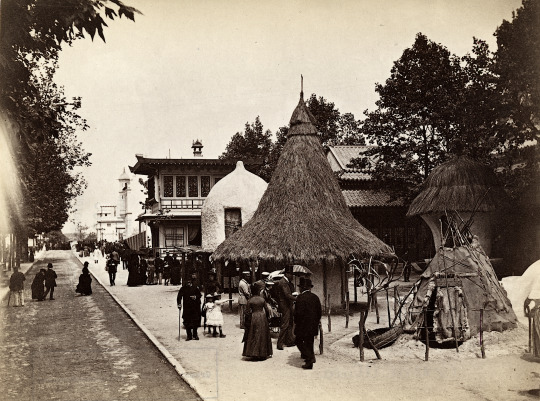

L’Histoire de l’Habitation Humaine, Exposition Universelle, Paris, 1899
Charles Garnier, architect
"At the base of the Eiffel Tower, 44 small buildings were constructed in the styles of various epochs and cultures. The architect was the famous designer of the Paris Opera, assisted by Professor Amman from the department of history and geography at the Lycée Louis-le-Grand."
Top: Central African and Lapland dwellings (foreground)
Bottom: Persian, Germanic and Gallic houses
#exposition universelle#paris#fin de siècle#Victorian#L’Histoire de l’habitation humaine#history of habitation#history of human habitation#charles garnier#history#anthropology#(one of the better examples of it at the exposition)#architecture#1899
4 notes
·
View notes
Text


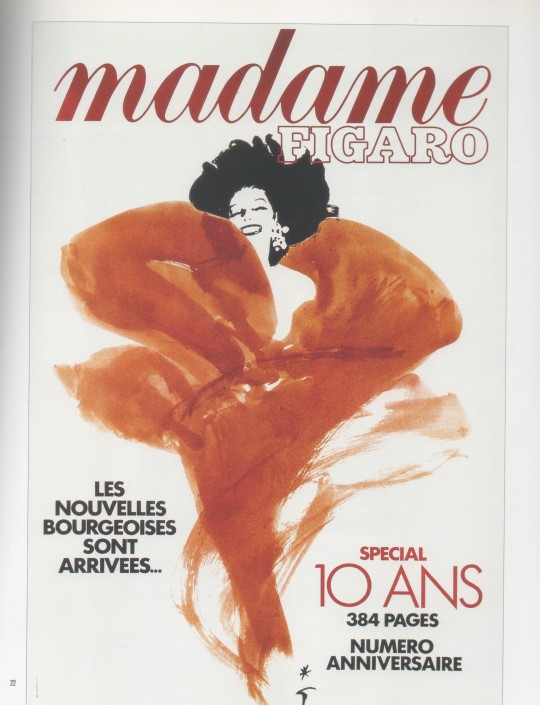









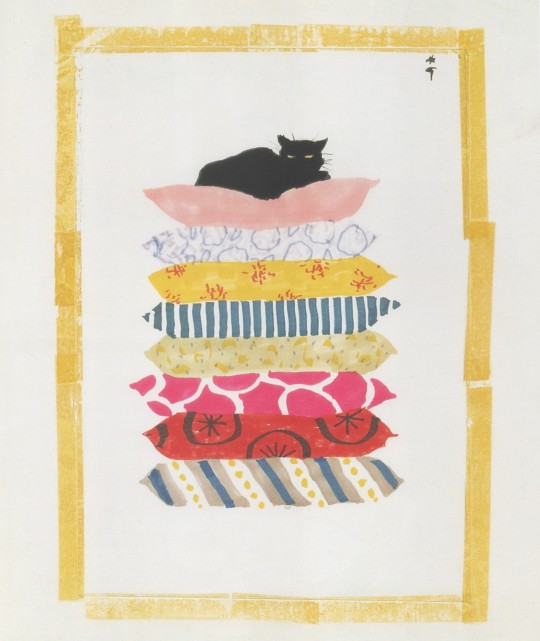
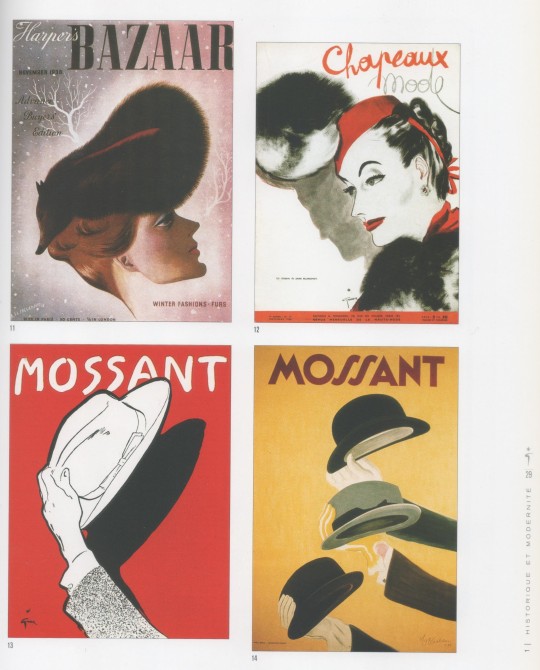
René Gruau L'art de la publicité The Art of Advertising
Réjane Bargiel, Sylvie Nissen
Le Cherche Midi, Paris 1999, 128 pages, 23x28cm, English/French, ISBN 9782862746951
euro 90,00
email if you want to buy [email protected]
Un G surmonté d'une étoile, griffe d'innombrables images appartenant à la mémoire collective. Des lèvres spirituelles qui attendent le baiser, des jambes sublimes jaillissant d'un nuage de plumes, des bras qui se tendent vers vous, des yeux splendidement expressifs qui plongent dans les vôtres. Voilà autant d'images emblématiques et célébrissimes de Gruau, affichiste et illustrateur qui constituent des repères incontournables de l'art publicitaire du XXe siècle. Autodidacte, nourri d'une culture classique et graphique à travers les travaux des grands peintres et illustrateurs du XIXe siècle, il a créé un style. Admirable synthèse graphique, son trait épuré parent de la calligraphie extrême-orientale, le chic de ses femmes mutines, toujours en mouvement symbolisent internationalement l'élégance. Depuis 1947, il imagine la publicité des parfums Dior, réinvente depuis plus de 30 ans l'affiche de music-hall pour le Bal du Moulin Rouge et le Lido. A 90 ans, René Gruau, très actif professionnellement symbolise à la fois l'héritage de l'art graphique et publicitaire du XIXe siècle et la modernité de la fin du XXe siècle. Gruau's trademark, the letter G crowned with a star, bas become a part of our collective memory. It has marked many memorable images: a spiritual set of lips just waiting to be kissed, a sublime pair of legs emerging from a cloud of feathers, arms that stretch out invitingly, splendidly expressive eyes like bottomless pools. Gruau's famous, emblematic images are at the core of twentieth-century advertising art. An autodidact thoroughly familiar with classical painting and graphic art, Gruau drew on the work of the great artists and illustrators of the nineteenth century in order to create his own unique style. In short, his work represents an admirable graphic synthesis. The purity of his line recalls Oriental calligraphy, while his chic, saucy women, always in motion, are an international symbol of elegance. He has been the creative force behind Dior perfume ads since 1947. For over 50 years he has reinvented the dancehall poster for the Moulin Rouge and the Lido. Still a working professional at 90 years old, Gruau symbolizes both the heritage of nineteenth-century modernism.
06/12/23
69 notes
·
View notes
Text
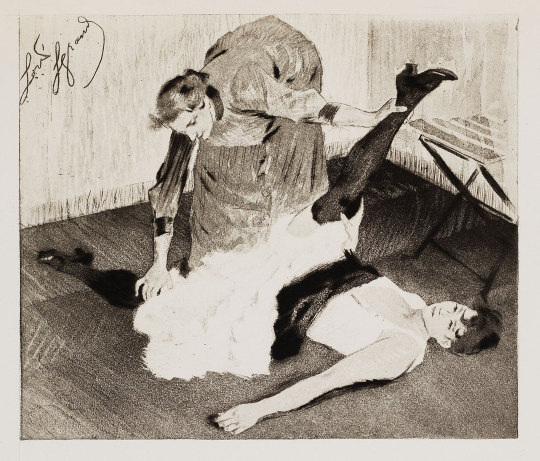
Louis Legrand (French, 1863-1961)
Aquatint illustration for Eugène Rodrigues-Henriques, Cours de danse fin de siècle (Paris: Dentu / Libraire de la Société des gens de lettres, 1892)
86 notes
·
View notes
Text

"L’orgueil n’est pas seulement un des accidents de la folie. Peut-être en est-il l’essence. Depuis la catastrophe paradisiaque, l’homme est porté à se croire Dieu. Il est porté à se croire en puissance d’être ou de faire un Dieu. L’idolâtrie, dit l’écriture, est le principe et la fin de tous les maux. Elle est certainement avec la folie dans un rapport intime, et peut-être ne trouverait-on pas un seul fou qui ne se considère comme Dieu en un certain recoin de son esprit."
Ernest Hello, Le siècle, Paris, Perrin, 1899.
26 notes
·
View notes
Text
“New Women” and Stoker’s Theatre Job
Given Bram’s “New Woman” rant at the end of Mina’s 10 August diary entry, now seems like a good time to discuss two of the great actresses of the Fin de Siècle stage!
First of all, we have Ellen Terry -- onstage partner to (you guessed it) our pal Henry Irving, and probably most widely recognizable in this John Singer Sargent painting of her as Lady Macbeth.
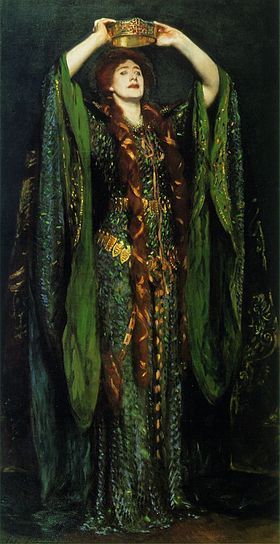
While the beetle-wing green dress deserved to be immortalized in all its stately glory, the tone of the portrait is actually very different from that of Terry’s Lady M -- she never crowned herself onstage, and the character was played with a much more “fragile” brand of late-Victorian femininity. Despite a scandalous private life (including two children born out of wedlock, gasp!) Terry’s public persona was aligned with a series of “virtuous” Shakespeare heroines (Ophelia, Cordelia, Desdemona, Portia, Beatrice, Imogen).
In 1878, when Henry Irving became manager of the Lyceum theatre (where Bram Stoker soon became business manager), he convinced Ellen Terry to join the company as his leading lady. Both actors were separated from their spouses (Terry from her second husband) at this point, so their partnership publicly mirrored that of earlier husband-wife leading pairs. At least officially, Irving dictated the company’s artistic choices, the casting, and Terry’s (record breaking) salary, and onstage, Lady M may have been evil, but she was also Macbeth’s perfectly loyal wife.

Ellen Terry’s Imogen (see the colorized edit of a publicity photograph above), opposite Henry Irving’s villainous Iachimo in 1896 is regarded by some as a key inspiration for Lucy Westenra (interesting article/abstract here and book chapter/summary here, apologies for the paywalls). Given that Iachimo creeps on Imogen while she’s asleep and then uses this encounter to threaten her life / accuse her of promiscuity, there are certainly some parallels to be had if you go looking for them.
Interestingly enough, however, when Stoker produced a staged reading of Dracula at the Lyceum in 1897 (in order to claim copyright over any future stage adaptation), Ellen Terry’s daughter, Edith Craig, played Mina. And Edith was very definitely a card-carrying, suffrage-supporting, queer and polyamorous New Woman. Fun fact: in the post-Lyceum phase of her career, Ellen Terry was actually a pretty active suffrage campaigner / fundraiser too. (And I suspect, if we were to carry Mina and Lucy forward to their hypothetical Dracula-free, untouched by Bram Stoker’s authorial misogyny futures, both of our heroines eventually would be too).
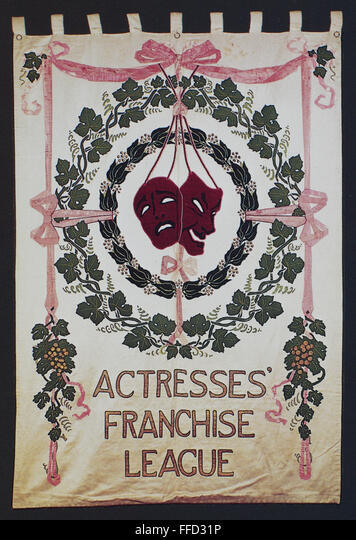
While we’re on the subject of the scandalous New Woman, however, the other late Victorian actress I cannot go without mentioning is the French sensation Sarah Bernhardt (who by the time Dracula was published had a substantial performance history in England and the US as well). A rough contemporary of Ellen Terry, Bernhardt, by contrast, cultivated her own reputation for the scandalous. Bernhardt quite intentionally broke gendered boundaries left right and center.
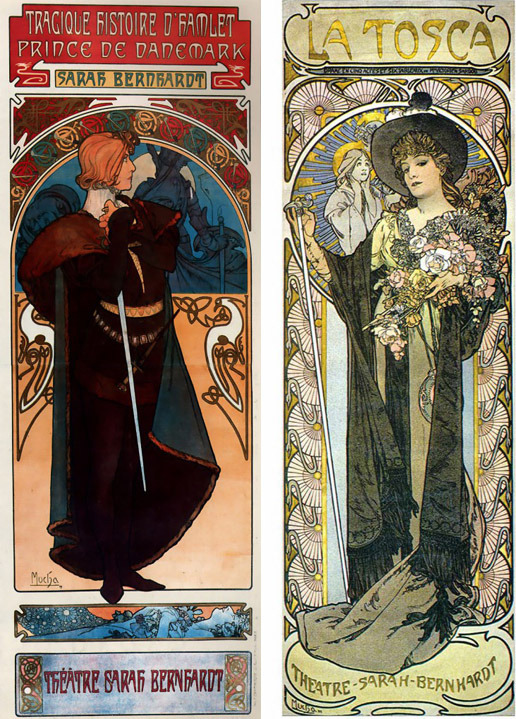
Visually, Bernhardt is perhaps most strongly associated with the art nouveau posters she commissioned (from artist Alphonse Mucha) for her theatre company in Paris - examples of 1899′s Hamlet and La Tosca are above. While there are also plenty of photographs of her as Hamlet (although far from the first woman to play the role, Bernhardt’s performance is one of the most famous) and in other promotional images, the photo I’d rather draw your attention to is this one:

Yes, that is a young Sarah Bernhardt lying asleep in a coffin -- a coffin which she is said to have traveled with and claimed to sleep in regularly. Quite the publicity stunt (and pre-Dracula too)! Other features of her eccentric public persona included traveling with a menagerie of wild animals -- including an alligator, at least one variety of big cat, and a number of lizards and/or chameleons.
Bernhardt was also a sculptor, and her Self-Portrait as a Chimera (circa 1880, below) notably features bat-like wings, instead of more traditionally feathered, bird-like ones.
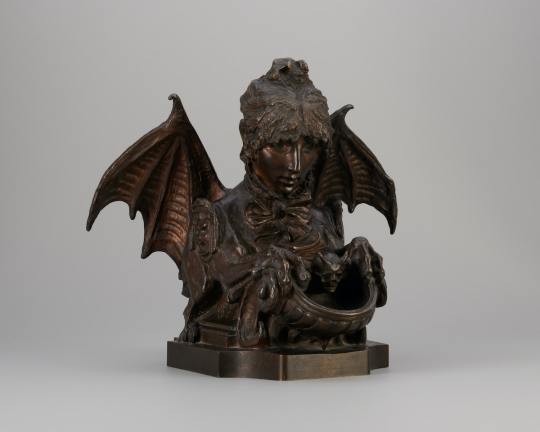
Which is to say, I think we’ve found another vampire!
#ellen terry#sarah bernhardt#Bram Stoker#our good friend henry irving#fin de siècle#the new woman (gasp!)#dracula daily#theatre history#shakespearean / stage manager reading dracula#cymbeline#hamlet#lady macbeth
585 notes
·
View notes
Photo
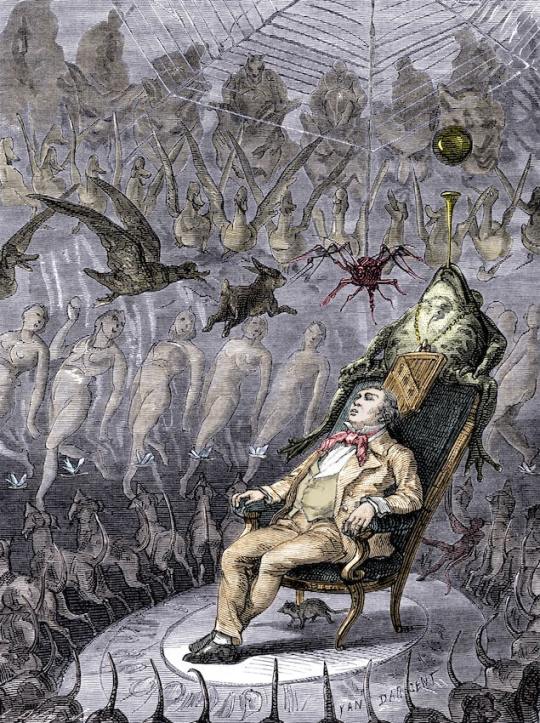
(vía The Ether Dreams of Fin-de-Siècle Paris – The Public Domain Review)
Yan' Dargent illustration for Louis Figuier's Les Merveilles de la Science depicting the hallucinatory dreams produced by ether, 1868 — Source
93 notes
·
View notes
Photo

Le Petit écho de la mode, no. 4, vol. 19, 24 janvier 1897, Paris. 6. Travestissements. Ville de Paris / Bibliothèque Forney
1. Fée du houx. Robe en gaze vert tendre semée de haies de houx. Guirlandes de houx posées au corsage et sur la jupe. Touffe de houx dans les cheveux. Baguette dorée avec piquets de houx.
2. Costume de dame anglaise au XVIe siècle. Robe de dessous en satin bleu pâle quadrillé de galons d’or avec cabochons de turquoise au milieu des carrés. Manteau en soie ou velours vieux rouge orné de galon d’or. Manches en satin blanc. Bande de fourrure dans le bas de la jupe. Coiffure en satin blanc avec pierres de couleur autour du fond et une grosse pierre turquoise ou brillant sur le front.
3. Costume de dame italienne, fin du XVe siècle. Jupe en satin rose broché. Corselet velours grenat, manches et robe de dessus en velours mousse bordés galon or. Draperies du corsage et crevés en satin blanc ou rose. Collier perles fines. Petite couronne or et perles au-dessus du chignon.
4. Costume de Pierrette. En satin jaune avec boutons bleu ciel.
5. Costume de clownesse. Robe en satin rose recouverte de gaze verte. Manches gaze verte et rose alternées. Papillons de paillettes brodés sur le corsage et sur la jupe. Gants et bas noirs. Papillons sur les souliers en satin rose. Papillon voltigeant au-dessus de la tête au moyen d’un fil de laiton léger.
6. Costume de Suissesse, fin du XVe siècle. Corsage velours noir à chemisette satin jaune. Jupe soie bleu paon avec bande satin jaune bordée galon argent. Chapeau feutre gris avec plumes bleues et jaunes. Las noirs, souliers cuir bleu.
—
1. Holly Fairy. Soft green gauze dress strewn with holly hedges. Garlands of holly placed on the bodice and on the skirt. Tuft of holly in the hair. Gold wand with holly stakes.
2. Costume of an English lady in the 16th century. Underdress in pale blue satin squared with gold stripes with turquoise cabochons in the middle of the squares. Old red silk or velvet coat adorned with gold braid. White satin sleeves. Strip of fur at the bottom of the skirt. White satin headdress with colored stones around the bottom and a large turquoise or sparkly stone on the forehead.
3. Italian lady's costume, late 15th century. Brocaded pink satin skirt. Garnet velvet bodice, sleeves and top dress in foam velvet edged with gold braid. Draperies of the bodice and crevés in white or pink satin. Fine pearl necklace. Small gold crown and pearls above the bun.
4. Pierrette's costume. In yellow satin with sky blue buttons.
5. Clown costume. Pink satin dress covered with green gauze. Alternating green and pink gauze sleeves. Sequin butterflies embroidered on the bodice and on the skirt. Black gloves and stockings. Butterflies on pink satin shoes. Butterfly fluttering above the head by means of a light brass wire.
6. Swiss costume, late 15th century. Black velvet bodice with yellow satin blouse. Peacock blue silk skirt with yellow satin band bordered with silver braid. Gray felt hat with blue and yellow feathers. Black wearers, blue leather shoes.
#Le Petit écho de la mode#19th century#1800s#1890s#1897#periodical#fashion#fashion plate#retouch#description#Forney#costume#dress#masquerade#holly#fairy#16th century#15th century#Pierrette#Swiss#stripes#gigot
158 notes
·
View notes
Photo
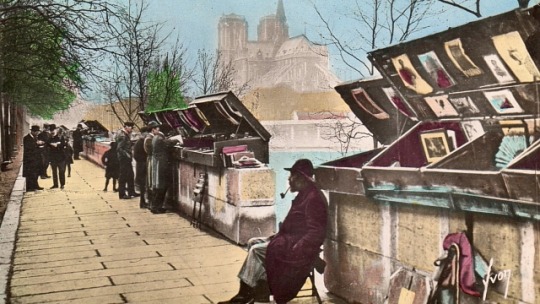
MÉTIER | Bouquinistes parisiens : menacés d’exil pour laisser place aux omnibus ➽ http://bit.ly/Bouquinistes-Paris À la fin du XIXe siècle, cependant qu’il est question de l’exil, vers la rive droite, des célèbres bouquinistes de Paris, que l’on aimerait chasser de l’attirante rive gauche pour faire place aux omnibus à vapeur, Jules Claretie argue des mille et un trésors qui partiraient avec eux si le projet était mis à exécution, et leur rend un émouvant hommage
27 notes
·
View notes
Text

Théophile Steinlen • La Rue (The Street) • [Charles Verneau, printer] • 1896 • Paris, Imp. Charles Verneau • Société de Propagation des Livres d'Art, Paris • 1913 • Lithograph in seven colours on wove paper on linen • Van Gogh Museum, Amsterdam
Colourful posters were a common sight in the streets of fin-de-siècle Paris. They were more than mere advertisements – some were genuine works of art. High-quality designs by progressive young artists were printed by specialist printshops. Théophile Alexandre Steinlen created this gigantic poster to advertise the master printer Charles Verneau.The Street is one of Steinlen’s most important works of art. Its large scale meant the poster had to be printed in no fewer than six separate parts. With its sparkling expanses of colour, decorative patterns and vivid content, the work has everything that made poster-art so innovative in this period.Steinlen presents a contemporary street scene, with people from every walk of life: the capitalist, the laundrywoman, the elegant Parisian lady and the worker. The artist has made all the figures the same height, as in a frieze in a classical temple or a fresco in a church. It is with good reason that at the time, posters were referred to as 'frescoes for the masses'. – Van Gogh Museum
#illustration#art#illustrator#advertisement poster#art history#belle époque#théophile alexandre steinlen#engraving#lithograph#color lithograph#poster art#poster design#artwork#sassafras & moonshine blog#fin-de-siècle paris
11 notes
·
View notes
Photo
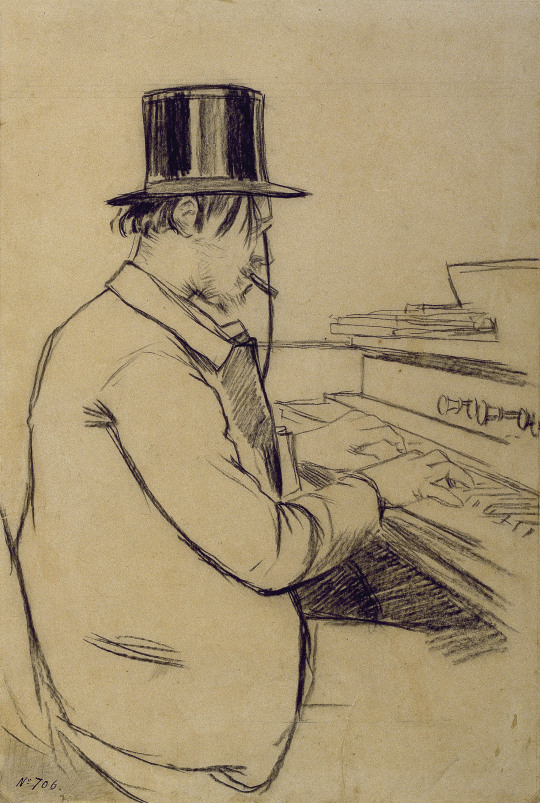
Erik Satie tocando el armonio = Erik Satie Playing the Harmonium
1891
Santiago Rusiñol (Spanish; 1861–1931)
Conté pencil on paper
Museu Nacional d’Art de Catalunya, Barcelona, Spain
#Santiago Rusiñol#Rusiñol#Spanish artists#Spanish art#Spanish drawings#drawings#1890s#Catalan Modernisme#Spanish draftsmen#composers#French composers#Erik Satie#Satie#Belle Epoque#Belle Époque#1890s Paris#fin de siècle Paris#fin de siècle#portraits#pince-nez#top hats#bohemians#Parisians#harmoniums#keyboards#musicians#cigarettes#smokers#Catalan artists
99 notes
·
View notes
Text



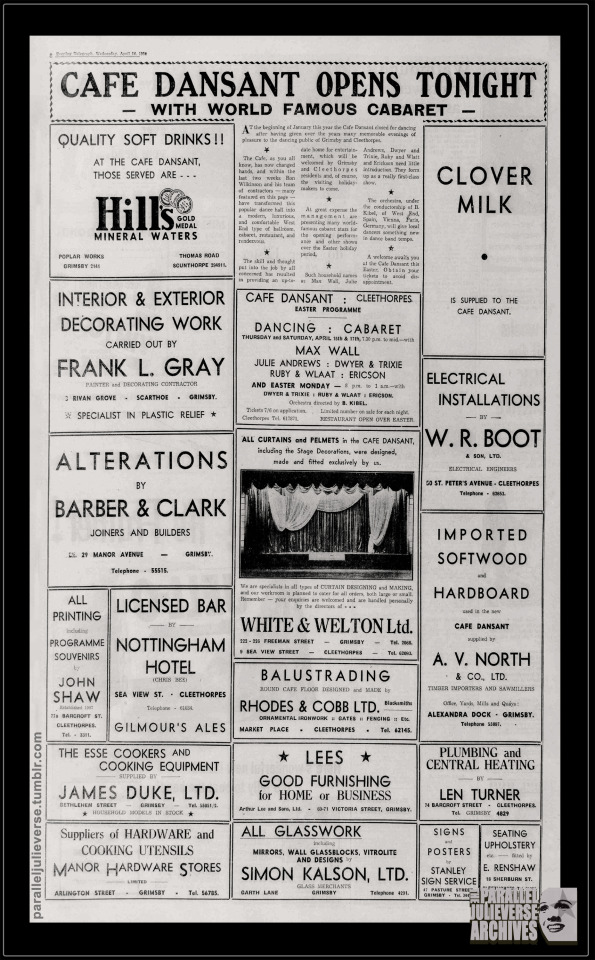
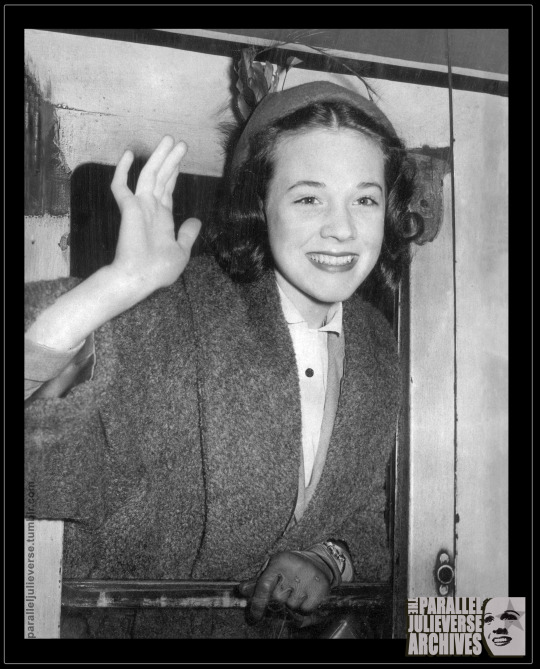
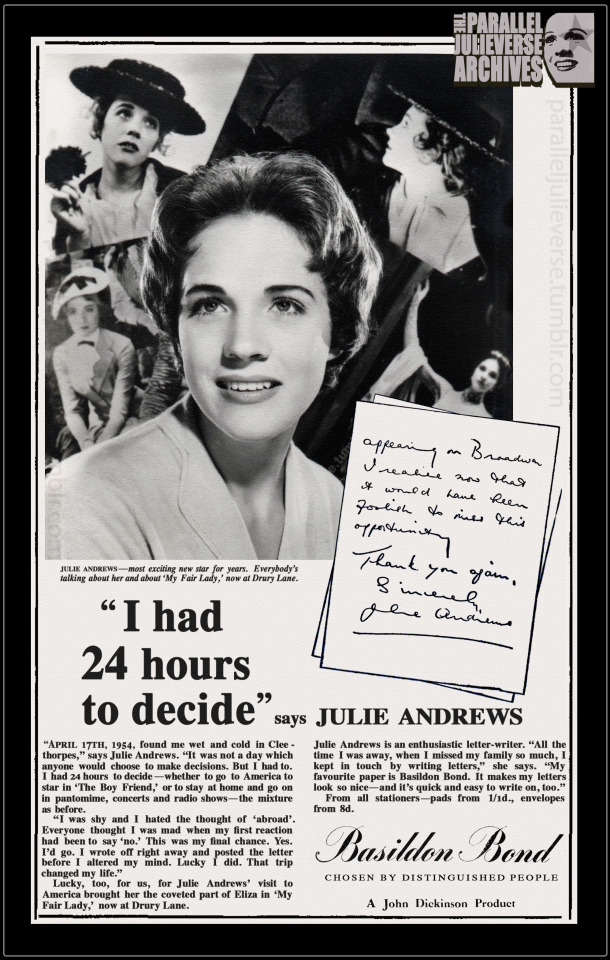
Come taste the wine... : 70th anniversary of Julie Andrews's 'cabaret debut' at the Café Dansant, Cleethorpes,
3 performances
Easter, 14-17 April, 1954
This week, seventy years ago, Julie Andrews made her official 'cabaret debut' at the Café Dansant in Cleethorpes. While not a major milestone in the traditional sense -- and one that seldom features in standard Andrews biographies -- the Cleethorpes appearance was nevertheless a significant event in the star's early career.
For a start, it was Julie's first appearance in cabaret -- the theatrical genre that is, not the Broadway musical which is a whole other Julieverse story. Characterised by sophisticated nightclub settings with adult audiences watching intimate performances, cabaret emerged in fin-de-siècle Paris before expanding to other European cities such as Berlin and Amsterdam (Appignanesi, 2004). Imported to Britain in the interwar years, cabaret offered a more urbane, adult alternative to the domestic traditions of English music hall and variety with their family audiences and jolly communal spirit (Nott, 2002, p. 120ff).
Julie's debut in cabaret was, thus, a significant step in her professional evolution towards a more mature image and repertoire. By 1954, Julie was 18, and well beyond the child star tag of her earlier years. Under the guidance of manager, Charles Tucker, there was a calculated strategy to reshape her stardom towards adulthood.
The maturation of Julie's image had begun in earnest the previous summer with Cap and Belles (1953), a touring revue that Tucker produced as a showcase for Julie, comedian Max Wall, and several other acts under his management. Cap and Belles afforded Julie the opportunity to shine with two big solos and a number of dance sequences. Much was made in show publicity of Julie's new "grown up" look, including the fact that she was wearing "her first off-the-shoulder evening dress" ('Her First Grown-Up Dress', 1953, p. 4).
The Cleethorpes cabaret was a further step in this process of transformative 'adulting'. Indeed, it was something of a Cap and Belles redux. Not only was Max Wall back as headline co-star, Julie even wore the same 'grown up' strapless evening gown. In keeping with a cabaret format, though, Julie was provided a longer solo set where she sang a mix of classical and contemporary pop songs including "My Heart is Singing", "Belle of the Ball", "Always", and "Long Ago and Far Away" ('Cabaret opens', 1954, p. 4).
That Julie should have chosen Cleethorpes for her cabaret debut might seem odd to contemporary readers. Today, this small town on the north Lincolnshire coast is largely regarded as a somewhat faded, out-of-the-way seaside resort. In its heyday of the mid-twentieth century, however, Cleethorpes was a vibrant tourist hub that attracted tens of thousands of holidaymakers each year (Dowling, 2005). With several large theatres and entertainment venues, Cleethorpes was also an important stop in the summertime variety circuit, drawing many of the era’s big stars and entertainment acts (Morton, 1986).
The Café Dansant was one of Cleethorpes' most iconic nighttime venues, celebrated for its elegant suppertime cabarets and salon orchestras. Opening in the 1930s, the Café was a particularly popular haunt during the war and post-war era when servicemen from nearby bases danced the night away with locals and visiting holidaymakers to the sound of touring jazz bands and crooners (Dowling, 2005, p. 129; Ruston, 2019).
By 1954, the Café was starting to show its age, and incoming new management decided to shutter the venue for several months to undertake a luxury refurbishment (‘Café Dansant closed', 1954, p. 3). A gala re-opening was set for the Easter weekend of April 1954, just in time for the start of the high season (‘Café Dansant opens', 1954, p. 8).
Opening festivities for the Café kicked off with a lavish five hour dinner cabaret on the evening of Wednesday, 14 April. Julie was “one of the world famous cabaret stars" booked for the gala event, and she received considerable promotional build-up in both local and national press (‘Café Dansant opens', 1954, p. 8). There was even a widely circulating PR photo of Julie boarding the train to Cleethorpes at London's Kings Cross station.
In the end, Max Wall was unable to appear due to illness, and Alfred Marks -- another Tucker artist and former variety co-star of Julie's (Look In, 1952) -- stepped in at short notice. Rounding out the bill were several other minor acts, including American dance duo, Bobby Dwyer and Trixie; novelty entertainers, Ruby and Charles Wlaat; and magician Ericson who doubled as cabaret emcee.
Commentators judged the evening a resounding success. The "Cafe Dansant has got away to a flying start, after probably the biggest opening night ever seen in Cleethorpes," effused one newspaper report (Sandbox, 1954, p.4). Special mention was made of Julie who “received a great reception when she sang a selection of old and new songs, accompanied at the piano by her mother” (‘'Café Dansant reopening’, 1954, p. 6).
Following her performance, Julie joined the Mayor of Cleethorpes, Mr Albert Winters, in a cake-cutting ceremony and mayoral dance. Decades later, Winters recalled how he still “savour[ed] the memory of snatching a dance with the young girl destined to be a star… [S]he seemed very slim and frail,” he reminisced, “but she was a great dancer and I thoroughly enjoyed myself” (Morton, 1986, p. 15).
Julie stayed on in Cleethorpes for two more performances on Thursday 15 and Saturday 17 April respectively, before returning to London with her mother on Easter Sunday, 18 April. The very next day she commenced formal rehearsals for Mountain Fire, Julie's first dramatic 'straight' play and another step in her professional pivot to more adult content (--also, time permitting, the subject of a possible future blogpost).
A final noteworthy aspect about the Cleethorpes appearance is that it was during this weekend that Julie made the momentous decision to go to America to star in The Boy Friend. In what has become part of theatrical lore, Julie had been offered the plum role of Polly Browne in the show's Broadway production sometime in February or March of 1954 while she was appearing in Cinderella at the London Palladium. To the American producers’ astonishment --- and manager Tucker’s horror -- Julie was initially reluctant to accept, fearful of leaving her home and family. She prevaricated for weeks. Finally, while she was in Cleethorpes, Julie was given an ultimatum and told she had to make her decision.
In her 1958 serialised memoir for Woman magazine, Julie recounts:
“Mummie and I went to Cleethorpes to do a concert. It was a miserable wet day. From our hotel I watched the dark sea pounding the shore with great grey waves. I was called to the downstairs telephone.
“Julie,” said Uncle Charles [Tucker]‘s voice from London, “they can’t wait any longer. You’ll have to make your mind up NOW.”
I burst into tears.
“I’ll go Uncle,” I sobbed, “if you’ll make it only one year’s contract instead of two. Only one year, please.” …
Against everyone’s judgment and wishes I got my way…None of us knew that if I’d signed for two [years], then I should never have been free to do Eliza in My Fair Lady. And never known all the happiness and success it has brought me” (Andrews, 1958, p. 46).
The Cleethorpes ultimatum even found its way into an advertising campaign that Julie did for Basildon Bond stationery in 1958/59, albeit with the telephone call converted into a letter for enhanced marketing purposes. Framed as a choice between going to America and the “trip [that] changed my life” or staying at home in England “and go[ing] on in pantomime, concerts, and radio shows—the mixture as before,” the advert highlighted the “sliding door” gravity of that fateful Cleethorpes weekend (Basildon Bond, 1958). What would the course of Julie's life been like had she said no to Broadway and opted to remain in the UK?
It is a speculative refrain that Julie and others have made frequently over the years. “If I’d stayed in England I would probably have got no further than pantomime leads,” she mused in a 1970 interview (Franks, 1970, p. 32). Or, more dramatically: “Had I remained in London and not appeared in the Broadway production of The Boy Friend…who knows, I might be starving in some chorus line today” (Hirschorn, 1968).
In all seriousness, it's doubtful that a British-based Julie would have faded into professional oblivion. As biographer John Cottrell quips: "that golden voice would always have kept her out of the chorus” (Cottrell, 1968, p. 71). Nevertheless, Julie's professional options in Britain during that era would have been greatly diminished. And she certainly wouldn't have achieved the level of international superstardom enabled by Broadway and Hollywood. Who knows, in a parallel 'sliding door' universe, our Julie might have gone on playing cabarets and end-of-pier shows in Cleethorpes...
Sources
Andrews, J. (1958). 'So much to sing about, part 3.' Woman. 17 May, 15-18, 45-48.
Appignanesi, L. (2004). The cabaret. Revised edn. Yale University Press.
Basildon Bond. (1958). 'I had 24 hours to decide, says Julie Andrews'. [Advertisement]. Daily Mirror. 6 October, p. 4.
'Cabaret opens Café Dansant." (1954). Grimsby Daily Telegraph. 15 April, p. 4.
‘Café Dansant closed.' (1954). Grimsby Evening Telegraph. 28 January, p. 3.
‘Café Dansant opens tonight – with world-famous cabaret’. (1954). Grimsby Evening Telegraph. 14 April, p. 8.
‘Café Dansant reopening a gay affair.’ (1954). Grimsby Evening Telegraph. 15 April, p. 6.
Cottrell, J. (1968). Julie Andrews: The story of a star. Arthur Barker Ltd.
Dowling, A. (2005). Cleethorpes: The creation of a seaside resort. Phillimore.
'Echoes of the past, the old Café Dansant'. (2009). Cleethorpes Chronicle. December 3, p. 13.
Frank, E. (1954). Daily News. 15 April, p.6.
Franks, G. (1970). ‘Whatever’s happened to Mary Poppins?’ Leicester Mercury. 4 December, p. 32.
'Her first grown-up dress.' (1953). Sussex Daily News. 28 July, p. 4.
Hirschorn, C. (1968). 'America made me, says Julie Andrews.' Sunday Express. 8 September, p. 23.
Morton, J. (1986). ‘Where the stars began to shine’. Grimsby Evening Telegraph. 22 September, p. 15.
Nott, J.J. (2002). Music for the people: Popular music and dance in interwar Britain. Oxford University Press.
Ruston, A. (2019). 'Taking a step back in time to the Cleethorpes gem Cafe Dansant where The Kinks once played'. Grimsby Live. 12 October.
Sandboy. (1954). 'Cleethorpes notebook: Flying start.' Grimsby Evening Telegraph. 19 April, p. 4.
12 notes
·
View notes
Text




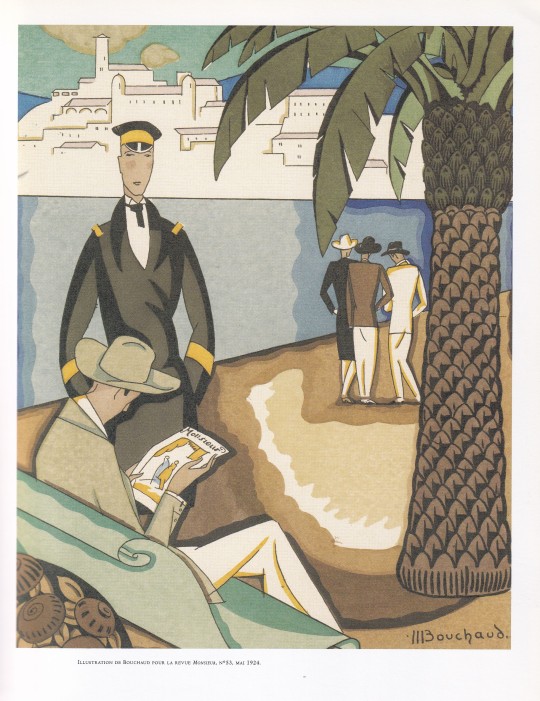

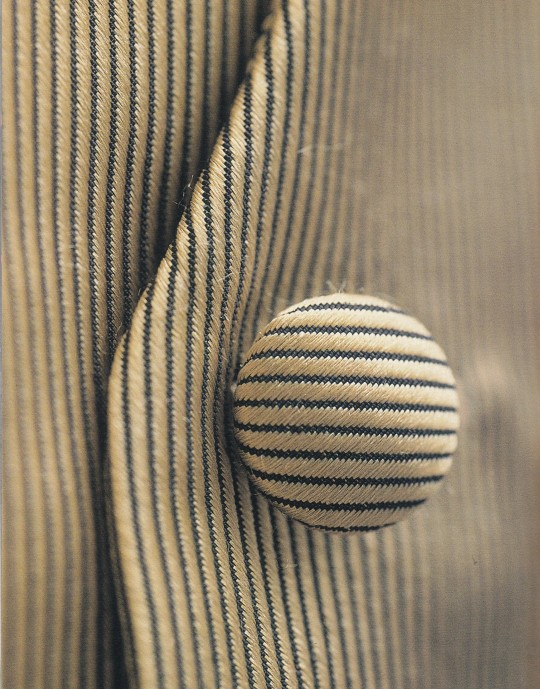
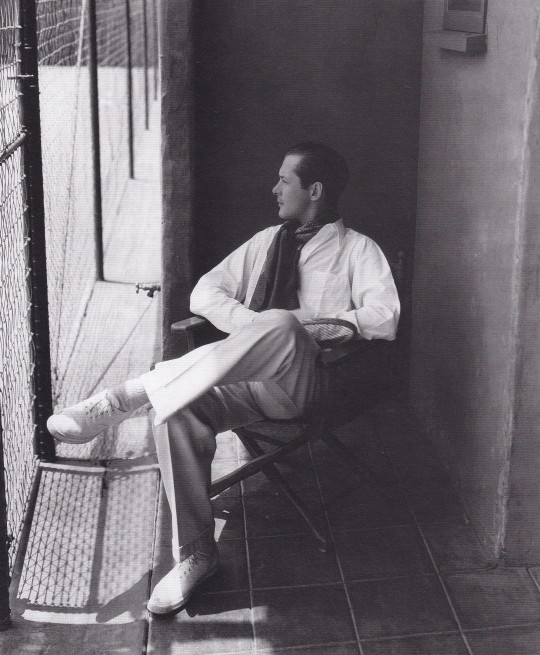


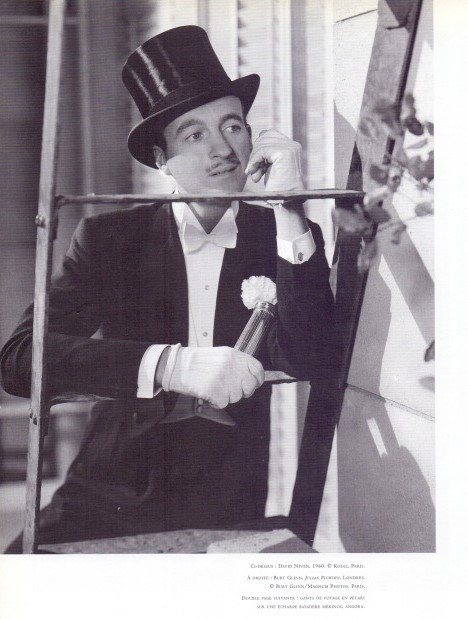


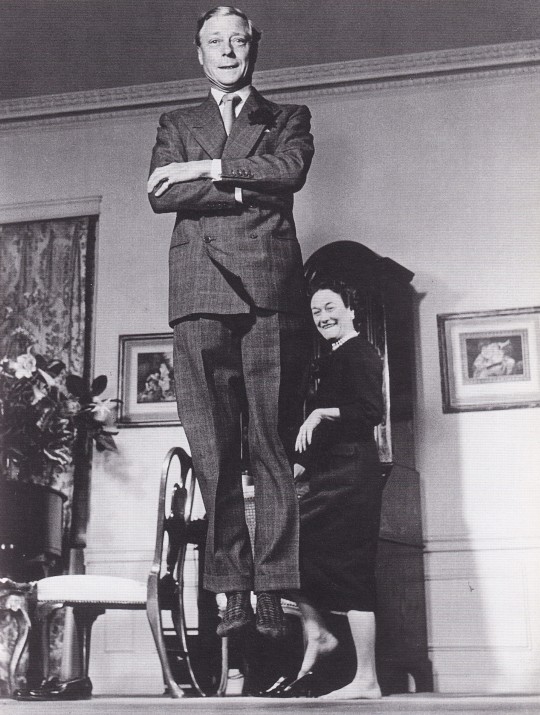

So British
par Eric Deschodt et Sacha Van Dorssen
Editions du Régard, Paris 2022, 296 pages, 23x28,4cm, ISBN 978284 105 1588,
euro 60,00
email if you want to buy [email protected]
Cet ouvrage aborde l'élégance anglaise masculine à travers l'histoire de la célèbre enseigne parisienne Old England, installée sur les grands boulevards de la capitale dès la fin du XIXe siècle. Tout ce qui a contribué à bâtir la notoriété de ce grand magasin, depuis les complets en tweed jusqu'aux pulls en shetland, est présenté dans cet ouvrage et accompagné d'illustrations de mode d'époque et d'oeuvres qui ont valorisé cette mode à l'anglaise.A travers cet ouvrage et l'histoire d'Old England, l'artisanat anglo-saxon est mis à l'honneur.
08/02/2024
#So British#men's fashion#élégance anglaise masculine#stile inglese#moda maschile#Old England#fashion books#fashionbooksmilano
19 notes
·
View notes
Text
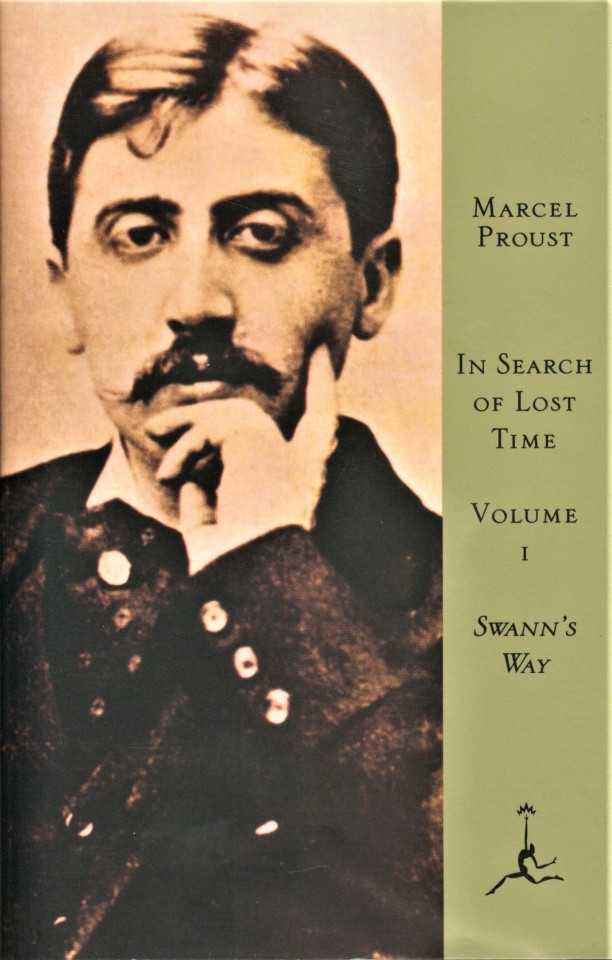

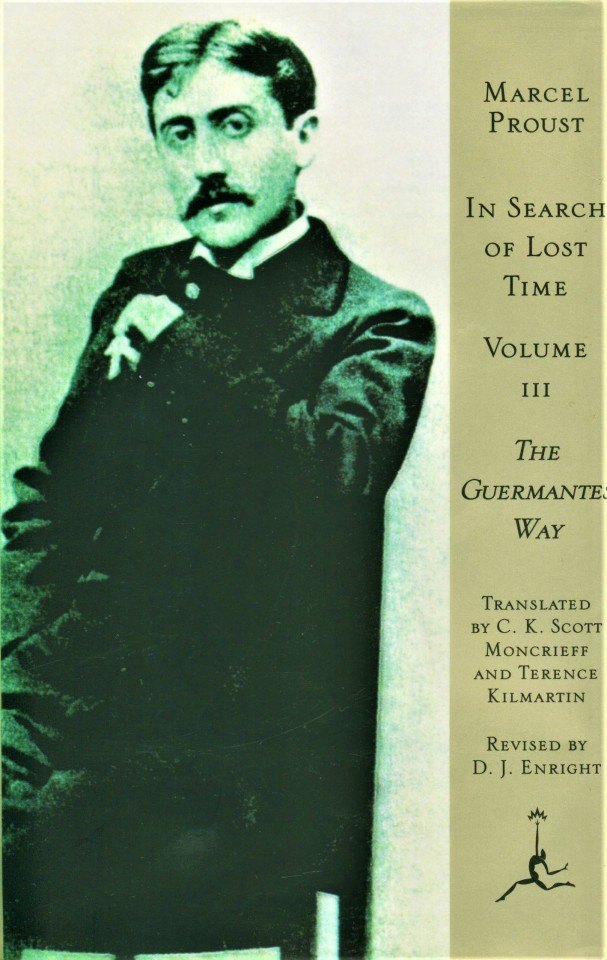
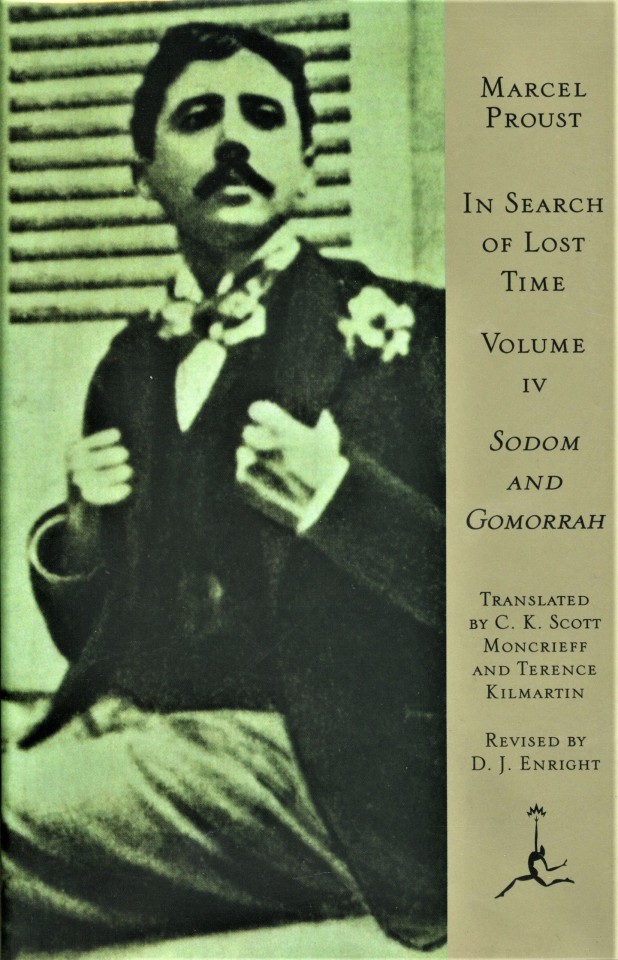
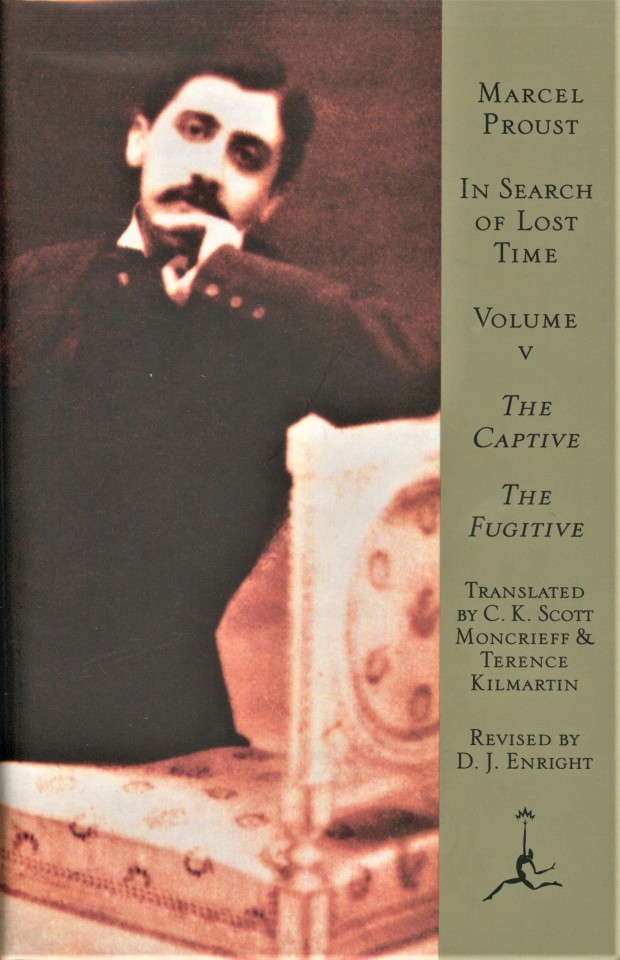

Milestone Monday
On this day, July 10 in 1871, French novelist Marcel Proust (Valentin Louis Georges Eugène Marcel Proust, to be exact) was born to an upper-class family in the Paris Borough of Auteuil. Born at a time of great change for French society, with the decline of the aristocracy and the rise of the middle class, Proust's most well-known publication, the monumental, 7-volume novel À la recherche du temps perdu (currently translated as In Search of Lost Time, but previously translated as Remembrance of Things Past) explores the effects of these changes in personal and intimate ways.
Proust began work on this novel in 1909 and continued to work on it until his final illness in the autumn of 1922 forced him to stop. It was published in France between 1913 and 1927, and has become one of the hallmarks of world literature from the 20th century. The novel unfolds as a series of memories initiated by the sensation of a sip of tea in which he had dipped a madeleine cake. The sensation sparks dormant recollections of experiences from childhood to adulthood in fin de siècle France society.
The first six volumes of the novel were first translated into English by the Scottish author and translator C. K. Scott Moncrieff from 1922 to 1930, with the final volume translated by British novelist and translator Stephen Hudson in 1931. Terence Kilmartin revised the Scott Moncrieff translation in 1981 (with the final volume translated by Andreas Mayor) using the new French edition of 1954. The copy shown here is a revision of that revision by British academic D. J. Enright, based on the French Bibliothèque de la Pléiade edition of 1987-1989, published in six volumes by the Modern Library in New York (and by Chatto and Windus in London) in 1992. It is the first edition to use the more current translation of the title, In Search of Lost Time.
View other Milestone Monday posts.
#Milestone Monday#milestones#Marcel Proust#birthdays#French authors#In Search of Lost Time#Rememberance of Things Past#À la recherche du temps perdu#C. K. Scott Moncrieff#Terence Kilmartin#D. J. Enright#Modern Library
48 notes
·
View notes
Text
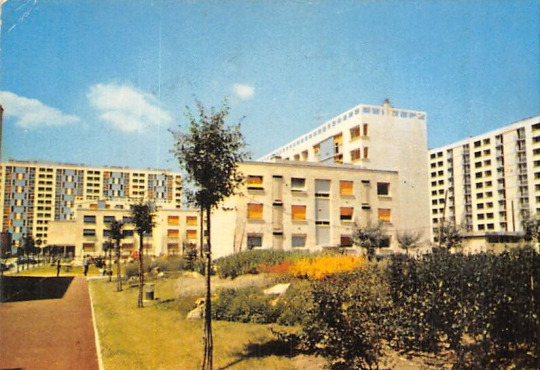


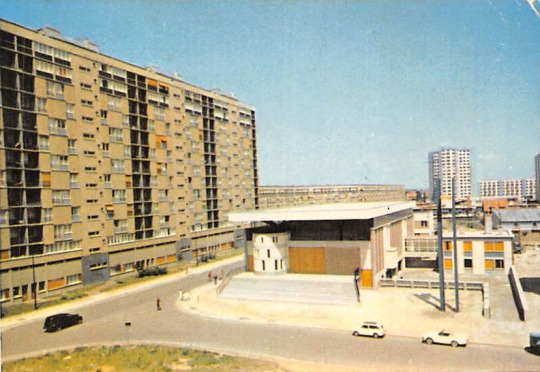


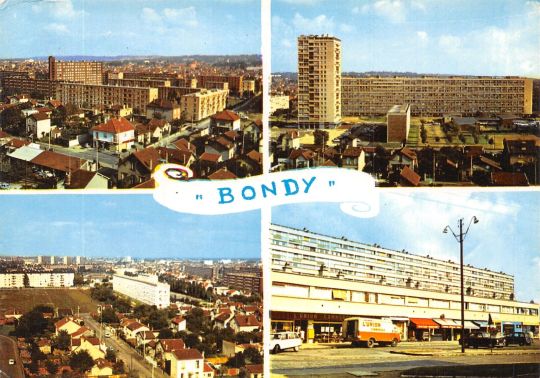
93 Bondy 1954 les grands ensembles HLM, terre d’accueil...Les premiers HLM datent de 1925-1930, mais au nord de la ville, leur construction ne commence que dans les années 1950-1960. A cette période d’urbanisme galopant, les promoteurs achètent les terres du nord encore disponibles pour y construire de grands ensembles immobiliers. En 1954, Bondy compte 22 411 habitants, la ville en comptera 51 653 en 1968, soient plus de 2 000 nouveaux habitants par an ! De nouveaux quartiers flambant neufs accueillent des populations migrantes chahutées par le vent de l’histoire, des pieds noirs, puis des familles immigrées d’Afrique du Nord, du Portugal, et d’Afrique sub-saharienne, notamment du Mali. Ville dynamique, marquée par des modes d’urbanisme contrasté, Bondy a ainsi toujours fait figure de terre d’accueil. C’est aujourd’hui de cette complexité urbaine et de cette mixité humaine que la ville tire sa richesse et entreprend un projet ambitieux de renouvellement urbain. C’est au tout début du 19e siècle, lors des derniers soubresauts de l’Empire Napoléonien, que Bondy va se retrouver sur le devant de la scène géopolitique européenne. En 1814, alors que Napoléon Ier rentre en France avec une armée battue, l’Europe entière coalisée contre l’Empire, est à ses trousses. 700 000 Russes, Prussiens, Autrichiens, Suédois, Bavarois, Wurtembergois, Hollandais, Allemands franchissent le Rhin et marchent sur Paris. Le 27 mars, le corps d’armée du général prussien Yorch vainc, dans la forêt de Bondy, les corps français. Temporairement occupé par les troupes russes, Bondy devient le quartier général de l’Empereur de Russie et du Roi de Prusse. La défaite française, lors de la Bataille de Paris, marque la fin des opérations militaires de la Campagne de France et conduit à la première abdication de Napoléon puis la Restauration des Bourbons. Le 10 avril, des détachements des six premières légions de la garde nationale de Paris se rendent à Bondy pour y recevoir Son Altesse Royale Monsieur, frère du roi Louis XVIII. En 1802, les travaux de percement du Canal de l’Ourcq, voulus par Napoléon 1er pour apporter l’eau à Paris, est un fait marquant de son urbanisme et va permettre à partir de 1821, date à laquelle s’achèvent les travaux, l’installation d’industries, notamment des scieries puis des centrales à béton, qui seront utiles plus tard pour construire des logements. En 1860-1870, l’arrivée du chemin de fer et de la ligne Paris-Strasbourg marque un tournant dans l’évolution démographique de la ville. Beaucoup d’Alsaciens et de Lorrains qui n’ont pas voulu devenir allemands et qui travaillaient en nombre pour les chemins de fer, s’installent dans le quartier près de la gare. Au nord de la ville, des paysans cultivent toujours leurs champs, notamment des maraîchers, tandis que l’urbanisme se développe vers l’ouest et le sud. En 1905, une partie de la ville devient Les Pavillons-sous-Bois. C’est à cette date que se déploie la zone pavillonnaire du sud de la ville avec des maisons en meulière, typique de la région parisienne.


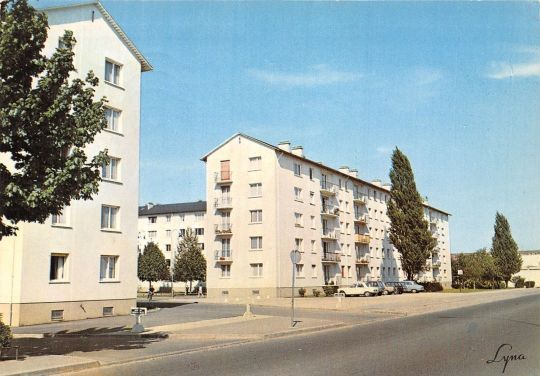


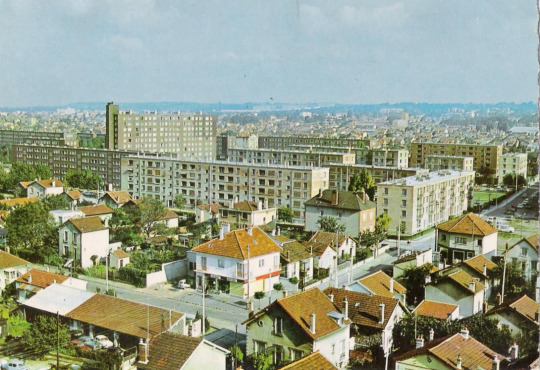





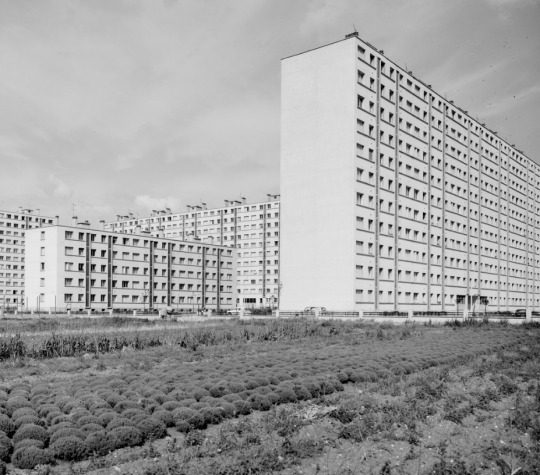



6 notes
·
View notes